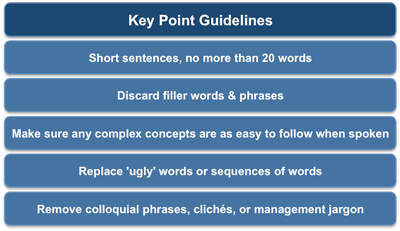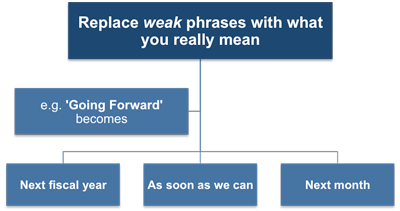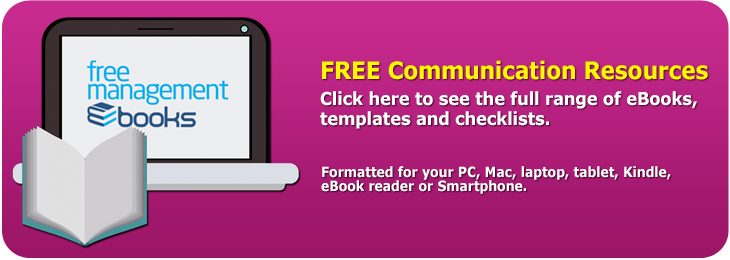Communication Skills - Key Point Guidelines
This process will produce your initial content, which you then edit down so that each of your key points meets the guidelines listed in the following diagram.
 |
Management jargon and clichés often go unnoticed in everyday conversations, but in a presentation they quickly become tiresome to your audience, and they can even turn them off.
These expressions have been rendered meaningless through heavy repeated use in inappropriate contexts. They are often used to mask a lack of knowledge, rather than providing information or ideas of real value and should be avoided wherever possible.
 |
As you continue preparing your content you should continually ask yourself two questions when describing each key point of your presentation:
1) Will the audience understand this point?
2) Will they be interested?
If even after asking these questions you are tempted to use clichés or jargon, think about replacing them with what you really mean - for example, instead of a phrase such as 'going forward,' you could say 'next month,' 'next fiscal year,' or 'as soon as we can.'
 |
Using technical jargon may be appropriate for your audience if most of them will understand it, but don't forget it is essential your audience identify with your key message statement and the implications it has for them.
You may also be interested in:
Preparing a Management Presentation | Repetition and Timing | Your Presentation Aim | The Five-Stage Format | Preparing the Main Body | Finalizing the Main Body | Preparing Your Pre-Introduction | Preparing the Introduction | Preparing the Summary and Conclusion.



